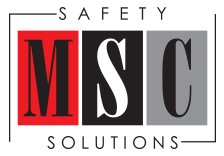In the construction industry, safety is paramount. With numerous hazards present on construction sites, it is essential to implement comprehensive safety practices and training programs to protect workers. Effective safety protocols not only prevent accidents and injuries but also enhance productivity and ensure compliance with regulatory standards.
The Importance of Safety Practices
Construction sites are inherently hazardous, with risks including falls, electrical hazards, heavy machinery, and exposure to harmful substances. Implementing stringent safety practices is crucial to mitigate these risks. Key safety measures include:
Personal Protective Equipment (PPE): Workers must wear appropriate PPE, such as helmets, gloves, safety glasses, and high-visibility clothing. PPE serves as the first line of defense against potential hazards.
Site Inspections: Regular site inspections are vital to identify and rectify potential hazards. Safety officers should conduct thorough inspections to ensure compliance with safety regulations and standards.
Hazard Communication: Clear communication about potential hazards is essential. This includes using signage, labeling dangerous areas, and conducting safety meetings to keep workers informed about site-specific risks.
Equipment Safety: Proper maintenance and operation of equipment are critical. Regular checks and adherence to manufacturer guidelines can prevent equipment malfunctions that may lead to accidents.
Comprehensive Training Programs
Training is a cornerstone of effective construction safety. Well-trained workers are more aware of potential hazards and know how to respond appropriately. Key elements of effective training programs include:
Initial Training: New hires should undergo comprehensive safety training before starting work on-site. This training should cover basic safety principles, proper use of PPE, and emergency procedures.
Ongoing Education: Safety training should be an ongoing process. Regular refresher courses and updates on new safety regulations and practices help ensure that workers remain vigilant and informed.
Hands-On Training: Practical, hands-on training is more effective than theoretical instruction. Workers should be trained in real-life scenarios to better understand how to apply safety practices in their daily tasks.
Specialized Training: Certain construction tasks, such as operating heavy machinery or working at heights, require specialized training. Workers should receive targeted training for specific roles to ensure they are fully equipped to handle job-specific hazards.
Fostering a Safety Culture
Creating a culture of safety within a construction company is essential. This involves:
Leadership Commitment: Management must demonstrate a strong commitment to safety by allocating resources, setting safety goals, and leading by example.
Worker Involvement: Engaging workers in safety discussions and decision-making processes fosters a sense of ownership and responsibility for safety.
Reporting and Feedback: Encouraging workers to report hazards and near-misses without fear of reprisal helps identify and address potential issues before they result in accidents.
In conclusion, construction safety practices and training are critical components of a successful construction project. By implementing robust safety measures, providing comprehensive training, and fostering a culture of safety, construction companies can protect their most valuable asset—their workers. Prioritizing safety not only reduces the risk of accidents but also enhances overall project efficiency and success. Remember, safety is not enforce, safety is a byproduct of training.




